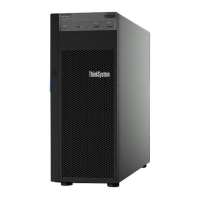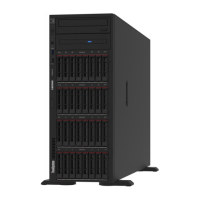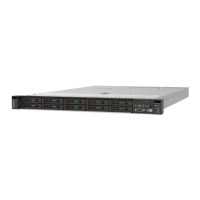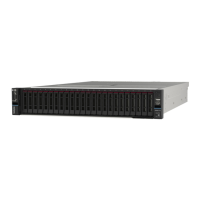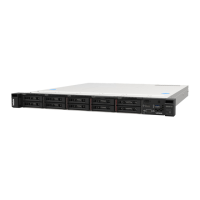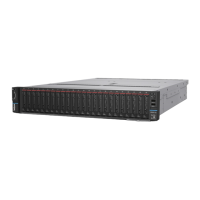1. Restart the system. Before the operating system starts up, press the key specified in the on-screen
instructions to enter the Setup Utility. (For more information, see the “Startup” section in the LXPM
documentation compatible with your server at
https://pubs.lenovo.com/lxpm-overview/.)
2. Go to System settings ➙ Devices and I/O Ports ➙ Intel® VMD technology ➙ Enable/Disable Intel®
VMD and enable the option.
3. Save the changes and reboot the system.
Intel VROC configurations
Intel offers various VROC configurations with different RAID level and SSD support. See the following for
more details.
Notes:
• Supported RAID levels varies by model. For the RAID level supported by ST250 V3, see
Technical
specifications
.
• For more information about acquiring and installing the activation key, see
https://fod.lenovo.com/lkms.
Intel VROC configurations for
PCIe NVMe SSDs
Requirements
Intel VROC Standard • Supports RAID levels 0, 1, and 10
• Requires an activation key
Intel VROC Premium • Supports RAID levels 0, 1, 5, and 10
• Requires an activation key
Bootable RAID • RAID 1 only
• 5th Gen Intel® Xeon® Scalable processors (formerly codenamed as Emerald
Rapids, EMR)
Intel VROC configurations for
SATA SSDs
Requirements
Intel VROC SATA RAID
• Supports RAID levels 0, 1, 5, and 10.
Deploy the operating system
Several options are available to deploy an operating system on the server.
Available operating systems
• Microsoft Windows Server
• VMware ESXi
• Red Hat Enterprise Linux
• SUSE Linux Enterprise Server
Complete list of available operating systems:
https://lenovopress.lenovo.com/osig.
Tool-based deployment
• Multi-server
Available tools:
– Lenovo XClarity Administrator
http://sysmgt.lenovofiles.com/help/topic/com.lenovo.lxca.doc/compute_node_image_deployment.html
Chapter 5. System configuration 57

